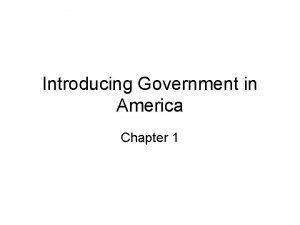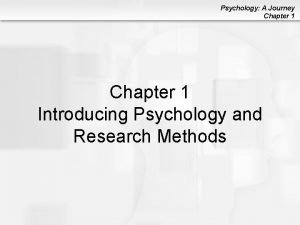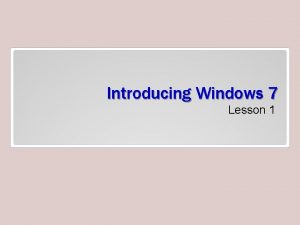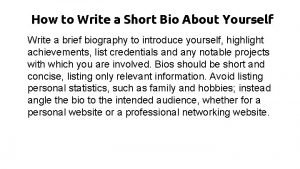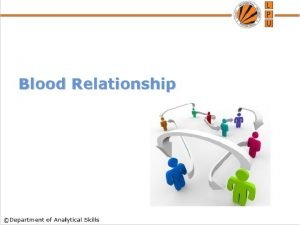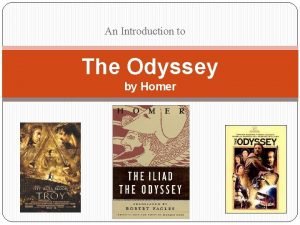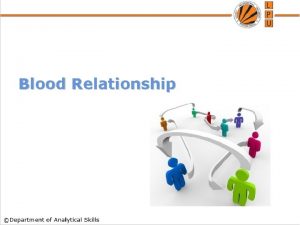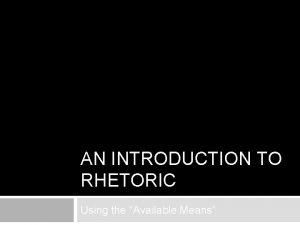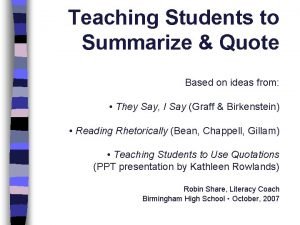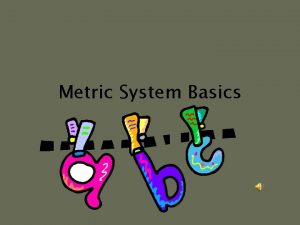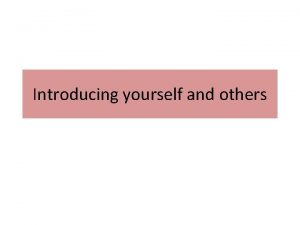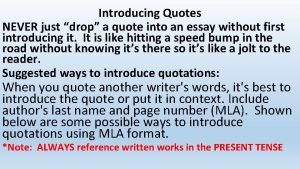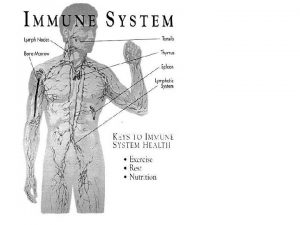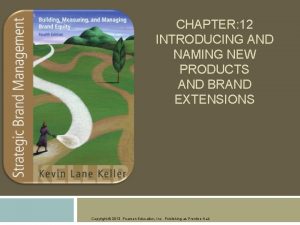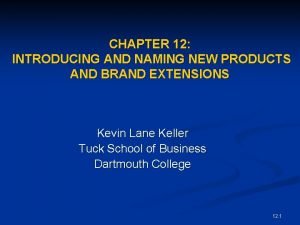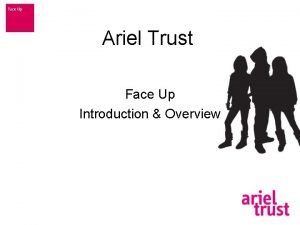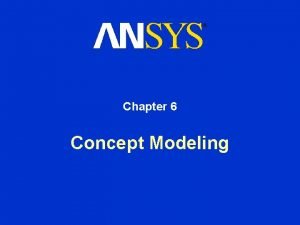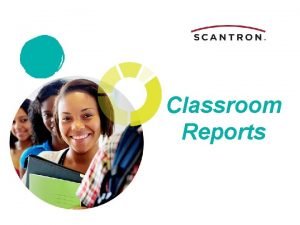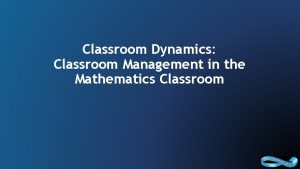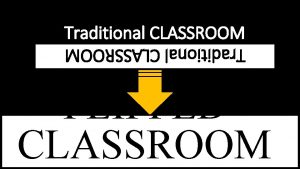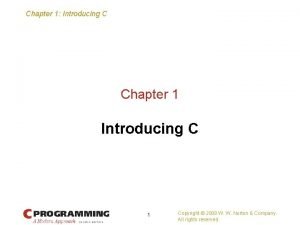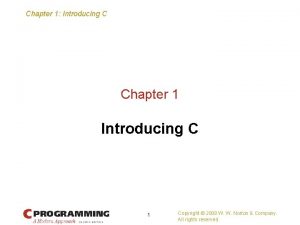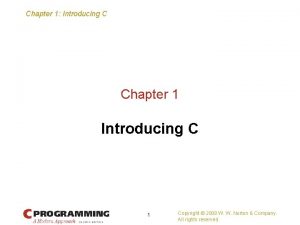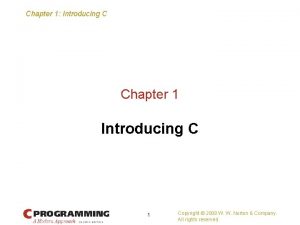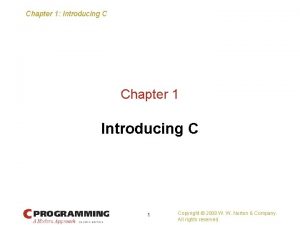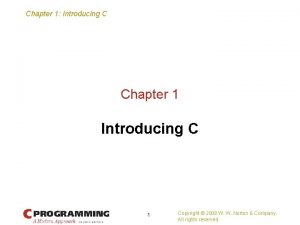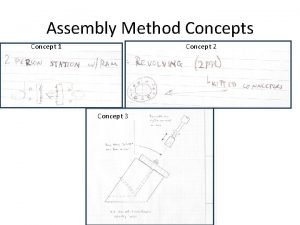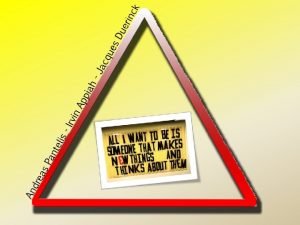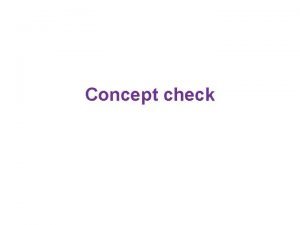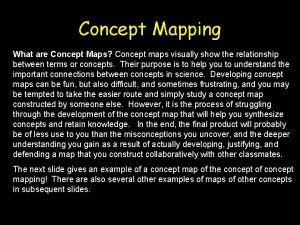CM Chapter 1 Introducing the Concept of Classroom



















































































- Slides: 83

CM: Chapter 1 Introducing the Concept of Classroom Management M. Lee Manning and Katherine T. Bucher, Classroom Management, 2 nd edition © 2007 by Pearson Education, Inc. Upper Saddle River, NJ 07458. All rights reserved.

Interstate New Teacher Assessment and Support Consortium INTASC standards identify n knowledge n skills n attitudes for all educators. M. Lee Manning and Katherine T. Bucher, Classroom Management, 2 nd edition © 2007 by Pearson Education, Inc. Upper Saddle River, NJ 07458. All rights reserved.

INTASC Teachers must know about: n Learners and student development n Multiple instructional strategies n Creating a learning environment for all students M. Lee Manning and Katherine T. Bucher, Classroom Management, 2 nd edition © 2007 by Pearson Education, Inc. Upper Saddle River, NJ 07458. All rights reserved.

Classroom Management – Definition Strategies for assuring physical and psychological safety p Techniques for changing student misbehaviors and teaching self-discipline p Methods of assuring an orderly progression of events p Instructional techniques that contribute to students’ positive behaviors p M. Lee Manning and Katherine T. Bucher, Classroom Management, 2 nd edition © 2007 by Pearson Education, Inc. Upper Saddle River, NJ 07458. All rights reserved.

Classroom Management Problems Challenge all teachers p Differ in frequency and intensity p Are similar in type p n n Goofing off Minor disruptions Disturb teachers and students p Negatively affect teaching/learning p Hinder academic achievement p M. Lee Manning and Katherine T. Bucher, Classroom Management, 2 nd edition © 2007 by Pearson Education, Inc. Upper Saddle River, NJ 07458. All rights reserved.

Possible Causes of Violence p Growing up abused p Lacking a nurturing family structure p Being influenced by n n n p Gang presence and activity Hate-motivated behavior Drugs and alcohol Experiencing bullying M. Lee Manning and Katherine T. Bucher, Classroom Management, 2 nd edition © 2007 by Pearson Education, Inc. Upper Saddle River, NJ 07458. All rights reserved.

CM: Chapter 2 Building the Foundation M. Lee Manning and Katherine T. Bucher, Classroom Management, 2 nd edition © 2007 by Pearson Education, Inc. Upper Saddle River, NJ 07458. All rights reserved.

Managing the Classroom Environment Develop routines for: n n n n Collecting and distributing materials Keeping track of students Assigning jobs in the classroom Organizing groups Keeping track of attendance and grades Keeping records Establishing a daily agenda M. Lee Manning and Katherine T. Bucher, Classroom Management, 2 nd edition © 2007 by Pearson Education, Inc. Upper Saddle River, NJ 07458. All rights reserved.

Improving Student Behavior – Gordon Teachers can improve student behavior by: n n n n Using student ideas in instruction Using more discussions and dialogue Praising students when appropriate Tailoring instruction to individual students Placing emphasis on productivity and creativity Using cooperatively planned learning goals Using more real and genuine teacher talk M. Lee Manning and Katherine T. Bucher, Classroom Management, 2 nd edition © 2007 by Pearson Education, Inc. Upper Saddle River, NJ 07458. All rights reserved.

Supporting Self-Control p Use signals: n n n Catching the eye of the student Frowning or smiling Shaking the head Stand near a student and use proximity. p Use humor, not sarcasm. p Show interest in student work. p Ignore minor misbehaviors. p Understand reasons for misbehaviors. p M. Lee Manning and Katherine T. Bucher, Classroom Management, 2 nd edition © 2007 by Pearson Education, Inc. Upper Saddle River, NJ 07458. All rights reserved.

Five Basic Psychological Needs – Glasser Need for survival p Need to belong p Need for power p Need for freedom p Need for fun p M. Lee Manning and Katherine T. Bucher, Classroom Management, 2 nd edition © 2007 by Pearson Education, Inc. Upper Saddle River, NJ 07458. All rights reserved.

CM: Chapter 3 Exploring the Theories of Assertive Discipline – Lee Canter and Marlene Canter M. Lee Manning and Katherine T. Bucher, Classroom Management, 2 nd edition © 2007 by Pearson Education, Inc. Upper Saddle River, NJ 07458. All rights reserved.

Key Concepts of Assertive Discipline p p p Rewards and punishments are effective. Both teachers and students have rights. Teachers create an optimal learning environment. Teachers apply rules and enforce consequences consistently without bias or discrimination. Teachers use a discipline hierarchy with the consequences appropriate for the grade level. Teachers are assertive, not nonassertive or hostile. M. Lee Manning and Katherine T. Bucher, Classroom Management, 2 nd edition © 2007 by Pearson Education, Inc. Upper Saddle River, NJ 07458. All rights reserved.

Response Styles p Nonassertive - “I’ve asked you repeatedly to stop talking, and you continue to do it. Please stop. ” p Assertive - “Justin, that is your warning for leaning back in the chair. Put the chair down now or you will face a loss of classroom privileges. ” p Hostile - “Put that comic book away or you’ll wish you had!” M. Lee Manning and Katherine T. Bucher, Classroom Management, 2 nd edition © 2007 by Pearson Education, Inc. Upper Saddle River, NJ 07458. All rights reserved.

Different types of rewards: p Social reinforcers n p Graphic reinforcers n p Star – Sticker – Checkmark Activity reinforcers n p Words – Smiles – Gestures Free time – Special game Tangible reinforcers n Treat – Pencils and other supplies – Certificates M. Lee Manning and Katherine T. Bucher, Classroom Management, 2 nd edition © 2007 by Pearson Education, Inc. Upper Saddle River, NJ 07458. All rights reserved.

Basic Rights of Students have the right to: n n n Have an optimal learning environment Have teachers who help them reduce inappropriate behavior Have teachers who provide appropriate support for appropriate behavior Have teachers who do not violate the students’ best interests Choose how to behave with the advance knowledge of the consequences that will consistently follow M. Lee Manning and Katherine T. Bucher, Classroom Management, 2 nd edition © 2007 by Pearson Education, Inc. Upper Saddle River, NJ 07458. All rights reserved.

Basic Rights of Teachers have the right to: n n Maintain an optimal learning environment Expect appropriate behavior Expect help from administrators and parents Ensure students’ rights and responsibilities are met by a discipline plan that: Clearly states expectations p Consistently applies the consequences p Does not violate the best interests of the students p M. Lee Manning and Katherine T. Bucher, Classroom Management, 2 nd edition © 2007 by Pearson Education, Inc. Upper Saddle River, NJ 07458. All rights reserved.

CM: Chapter 4 Exploring the Theories of Democratic Teaching – Rudolph Dreikurs M. Lee Manning and Katherine T. Bucher, Classroom Management, 2 nd edition © 2007 by Pearson Education, Inc. Upper Saddle River, NJ 07458. All rights reserved.

Key Concepts of Dreikurs’s Theory p Mistaken goals n n Attention-getting Power-seeking Revenge Helplessness (feelings of inadequacy) (Dreikurs, 1968; 1971) p Democratic (not permissive or autocratic) teaching p Encouragement rather than praise p Logical consequences n n n Classroom rules Implement logical consequences rather than punishments. Use punishment only when all logical consequences have been exhausted (Dreikurs and Grey, 1968). M. Lee Manning and Katherine T. Bucher, Classroom Management, 2 nd edition © 2007 by Pearson Education, Inc. Upper Saddle River, NJ 07458. All rights reserved.

Logical Consequences Behavior p A student writes on a school desk. Logical Consequence p The student must clean the desk. p A student destroys another’s property. p The student (not the parent) must pay for the property. p A student refuses to complete assignments during class. p The student does the work during recess or before/after school. M. Lee Manning and Katherine T. Bucher, Classroom Management, 2 nd edition © 2007 by Pearson Education, Inc. Upper Saddle River, NJ 07458. All rights reserved.

Identifying Logical Consequences What consequences might be logical for these behaviors? p A student intentionally throws his books to the floor in a fit of anger. p A student calls another student a racial slur. p A student refuses to complete an assignment. M. Lee Manning and Katherine T. Bucher, Classroom Management, 2 nd edition © 2007 by Pearson Education, Inc. Upper Saddle River, NJ 07458. All rights reserved.

Praise or Encouragement p p Praise: “You’re a fine student! You finished your math in record time. ” Encouragement: “I can tell you’ve been practicing your math drills and I hope you will continue. ” Praise: “You’re a whiz with that computer program. ” Encouragement: “I can tell you enjoy the challenges of learning to use a new computer program. ” M. Lee Manning and Katherine T. Bucher, Classroom Management, 2 nd edition © 2007 by Pearson Education, Inc. Upper Saddle River, NJ 07458. All rights reserved.

Developing Rules p Rules define: n n n p What behavior the teacher expects What the students should do How the class is conducted or how the day is structured Rules may also contain: n n Consequences when rules are broken Rewards when rules are followed M. Lee Manning and Katherine T. Bucher, Classroom Management, 2 nd edition © 2007 by Pearson Education, Inc. Upper Saddle River, NJ 07458. All rights reserved.

CM: Chapter 5 Exploring the Theories of Congruent Communication – Haim Ginott M. Lee Manning and Katherine T. Bucher, Classroom Management, 2 nd edition © 2007 by Pearson Education, Inc. Upper Saddle River, NJ 07458. All rights reserved.

Congruent Communication p Congruent communication is: n n n p Open Harmonious with students’ feelings about themselves and their situations Without sarcasm Congruent communication sends “sane messages” about the situation, not the personality or character of the student. M. Lee Manning and Katherine T. Bucher, Classroom Management, 2 nd edition © 2007 by Pearson Education, Inc. Upper Saddle River, NJ 07458. All rights reserved.

According to Ginott, teachers must: p Promote self-discipline for both teachers and students. p Believe that “the essence of discipline is finding effective alternatives to discipline” (Ginott, 1972 a , p. 147). p Accept and acknowledge students without labeling, arguing, disputing, or belittling the individual. p Avoid evaluative praise and use appreciative praise. p Avoid sending “you” messages and use “I” messages. p Demonstrate their best behaviors. p Invite rather than demand student cooperation. M. Lee Manning and Katherine T. Bucher, Classroom Management, 2 nd edition © 2007 by Pearson Education, Inc. Upper Saddle River, NJ 07458. All rights reserved.

Teachers’ Roles p Use positive, effective communication. p Provide a classroom environment that encourages good behavior. p Model behaviors that invite cooperation and positive behavior. p Avoid autocratic behaviors. p Seek alternatives to punishment. p Remain sensitive to the needs of students. p Promote cooperation with students and harmony in the classroom. M. Lee Manning and Katherine T. Bucher, Classroom Management, 2 nd edition © 2007 by Pearson Education, Inc. Upper Saddle River, NJ 07458. All rights reserved.

Evaluative and Appreciative Praise p Evaluative praise (destructive) Example: Samal, you did a good job with the reading test. I like having you in my class. p Appreciative praise (productive) Example: Samal, I can tell you really tried on the reading test. M. Lee Manning and Katherine T. Bucher, Classroom Management, 2 nd edition © 2007 by Pearson Education, Inc. Upper Saddle River, NJ 07458. All rights reserved.

Can you use Ginott’s ideas? Can you p use: n n n p clear communication? sane messages? guidance, rather than criticism? refrain from using punishment? p handle anger appropriately? M. Lee Manning and Katherine T. Bucher, Classroom Management, 2 nd edition © 2007 by Pearson Education, Inc. Upper Saddle River, NJ 07458. All rights reserved.

CM: Chapter 6 Exploring the Theories of Instructional Management – Jacob Kounin M. Lee Manning and Katherine T. Bucher, Classroom Management, 2 nd edition © 2007 by Pearson Education, Inc. Upper Saddle River, NJ 07458. All rights reserved.

Kounin’s Key Concepts p Teacher Behavior p Movement Management p Group Focus M. Lee Manning and Katherine T. Bucher, Classroom Management, 2 nd edition © 2007 by Pearson Education, Inc. Upper Saddle River, NJ 07458. All rights reserved.

Avoiding Overdwelling p p Journal writing Free choice reading from p p p Doing homework Prepared mini-lessons that take 10 minutes or less Teacher reads aloud p p p the classroom book collection school library a poem short story Listening to an audio book M. Lee Manning and Katherine T. Bucher, Classroom Management, 2 nd edition © 2007 by Pearson Education, Inc. Upper Saddle River, NJ 07458. All rights reserved.

Slowdowns p Overdwelling – dwelling on corrective behavior longer than needed or on a lesson longer than required. p Fragmentation – breaking an activity or behavior into subparts although the activity could be performed easily as a single unit or an uninterrupted sequence. M. Lee Manning and Katherine T. Bucher, Classroom Management, 2 nd edition © 2007 by Pearson Education, Inc. Upper Saddle River, NJ 07458. All rights reserved.

Dangles and Truncations p Dangle – Starting an activity and then leaving it and beginning another activity. Later, resuming the original activity. p Truncation – The same as a dangle, except not resuming the initiated, then dropped, activity. M. Lee Manning and Katherine T. Bucher, Classroom Management, 2 nd edition © 2007 by Pearson Education, Inc. Upper Saddle River, NJ 07458. All rights reserved.

Instructional Techniques to Promote Good Behavior p p p p Establish clear procedures. Develop lessons on appropriate level. Focus on the entire class. Do not dwell too long on one or two students. Pace instruction to maintain student interest. Provide curricular content and instructional methods that interest and challenge learners. Demonstrate appropriate instructional behaviors: n n p withitness group alerting Avoid dangles, fragmentation, and satiation. M. Lee Manning and Katherine T. Bucher, Classroom Management, 2 nd edition © 2007 by Pearson Education, Inc. Upper Saddle River, NJ 07458. All rights reserved.

CM: Chapter 7 Exploring the Theories of Discipline with Dignity – Richard Curwin and Allen Mendler M. Lee Manning and Katherine T. Bucher, Classroom Management, 2 nd edition © 2007 by Pearson Education, Inc. Upper Saddle River, NJ 07458. All rights reserved.

Seven Basic Principles of Teacher Behavior Teachers should: p Work toward long-term behavior changes. p Stop doing ineffective things. p Be fair without treating everyone the same way. p Make rules that make sense. p Model what they expect. p Believe that responsibility is more important than obedience. p Treat students with dignity. M. Lee Manning and Katherine T. Bucher, Classroom Management, 2 nd edition © 2007 by Pearson Education, Inc. Upper Saddle River, NJ 07458. All rights reserved.

Avoiding Power Struggles p “Lars, give me the comic book now or after class. ” p “Rosette, either move to the other desk now or stay in for recess. ” p “Trey, either stop talking to Sidney or take a time-out. ” M. Lee Manning and Katherine T. Bucher, Classroom Management, 2 nd edition © 2007 by Pearson Education, Inc. Upper Saddle River, NJ 07458. All rights reserved.

Short-Term and Long-Term Management Techniques Rule Infraction: A student physically takes another student’s lunch. n Short-Term: Teacher angrily requires the student to write a sentence 100 times. n Long-Term: Teacher treats the student with dignity while asking student to return the lunch box and explaining the importance of personal property in the classroom. M. Lee Manning and Katherine T. Bucher, Classroom Management, 2 nd edition © 2007 by Pearson Education, Inc. Upper Saddle River, NJ 07458. All rights reserved.

Short-Term and Long-Term Management Techniques Rule Infraction: A student walks around the room, talks out of turn, and is bothersome to other students. n Short-Term: “Tish, sit down and be quiet. How many times do I have to say the same thing? ” n Long-Term: Meeting with Tish in private, the teacher says, “Tish, the students and I are disturbed when you talk and walk around the room. Let’s discuss why you do these things and see whether we can find something constructive for you to do. ” M. Lee Manning and Katherine T. Bucher, Classroom Management, 2 nd edition © 2007 by Pearson Education, Inc. Upper Saddle River, NJ 07458. All rights reserved.

Modeling Appropriate Behavior Teachers can model appropriate behavior in the classroom by: n n n Speaking to students the same way they expect students to speak to them Refraining from critical or harsh remarks to correct student behavior Obeying the same classroom rules they expect students to obey Meeting all deadlines and due dates Being ready to begin class on time M. Lee Manning and Katherine T. Bucher, Classroom Management, 2 nd edition © 2007 by Pearson Education, Inc. Upper Saddle River, NJ 07458. All rights reserved.

CM: Chapter 8 Exploring the Theories of Positive Classroom Management – Fredric Jones M. Lee Manning and Katherine T. Bucher, Classroom Management, 2 nd edition © 2007 by Pearson Education, Inc. Upper Saddle River, NJ 07458. All rights reserved.

Misconceptions About Discipline p p p p A good curriculum means teachers will not have discipline problems. Some teachers are born with a gift for good management. Some students are truly unmanageable. Discipline and rules thwart creativity and spontaneity. The longer teachers teach, the better their management will be. There are some teachers who do not need help with discipline. The only problem is with the class this year (Jones, 1987 a). Students dislike and resent classroom rules. M. Lee Manning and Katherine T. Bucher, Classroom Management, 2 nd edition © 2007 by Pearson Education, Inc. Upper Saddle River, NJ 07458. All rights reserved.

Three Types of Students p The Self-Starters – Listen to the directions, follow the instructions, and correctly complete work assignments. p The Most Needy – Need help; they cannot work alone no matter how hard they try. p The Middle-of-the-Roaders – Are comfortably falling into a C+ lifestyle; they are not pursuing excellence. M. Lee Manning and Katherine T. Bucher, Classroom Management, 2 nd edition © 2007 by Pearson Education, Inc. Upper Saddle River, NJ 07458. All rights reserved.

Fundamental Skills of Classroom Management Developing classroom structures including rules, procedures, and physical arrangements p Remaining calm and using body language to set limits p Teaching students cooperation and responsibility p Providing back-up systems p M. Lee Manning and Katherine T. Bucher, Classroom Management, 2 nd edition © 2007 by Pearson Education, Inc. Upper Saddle River, NJ 07458. All rights reserved.

Preferred Activity Time p Students have a resource for which they are responsible. p They have control over the consumption of that resource. p They must live with the consequences of the consumption of that resource. M. Lee Manning and Katherine T. Bucher, Classroom Management, 2 nd edition © 2007 by Pearson Education, Inc. Upper Saddle River, NJ 07458. All rights reserved.

CM: Chapter 9 Exploring the Theories of Inner Discipline – Barbara Coloroso M. Lee Manning and Katherine T. Bucher, Classroom Management, 2 nd edition © 2007 by Pearson Education, Inc. Upper Saddle River, NJ 07458. All rights reserved.

Key Concepts of Inner Discipline p p p Treat students with respect and dignity. Teachers should follow the Golden Rule. Teachers are either brickwall, jellyfish, or backbone and their choice affects students and their behavior. Students should be taught Inner Discipline. Teachers must teach students to accept ownership of their problems. Teachers should n n n p avoid punishments, rewards, and threats; use a four-step approach to discipline; and use assertive confrontation. Restitution, resolution, and reconciliation are three R’s of discipline. M. Lee Manning and Katherine T. Bucher, Classroom Management, 2 nd edition © 2007 by Pearson Education, Inc. Upper Saddle River, NJ 07458. All rights reserved.

Three Categories of Teachers p Brickwall p Jellyfish p Backbone M. Lee Manning and Katherine T. Bucher, Classroom Management, 2 nd edition © 2007 by Pearson Education, Inc. Upper Saddle River, NJ 07458. All rights reserved.

Seven Rules for a Fair Fight Speak the message assertively. p Tell the other person about your feelings. p State your belief but avoid destructive words. p Give direct feedback. p State what you want. p Be open to the other person’s perspective. p Negotiate an agreement. p M. Lee Manning and Katherine T. Bucher, Classroom Management, 2 nd edition © 2007 by Pearson Education, Inc. Upper Saddle River, NJ 07458. All rights reserved.

The Four Steps of Discipline Show students what they should have done. p Give them as much ownership of the problem as they are able to handle. p p Provide options for solving the problem. p Leave their dignity intact. M. Lee Manning and Katherine T. Bucher, Classroom Management, 2 nd edition © 2007 by Pearson Education, Inc. Upper Saddle River, NJ 07458. All rights reserved.

Three R’s of Discipline p Restitution – fixing what the student did; involves repairing the physical damage (if any) and the personal damage. p Resolution – determining a way not to let the behavior happen again. p Reconciliation – honoring the restitution plan and making a commitment to live up to the resolution. M. Lee Manning and Katherine T. Bucher, Classroom Management, 2 nd edition © 2007 by Pearson Education, Inc. Upper Saddle River, NJ 07458. All rights reserved.

CM: Chapter 10 Exploring the Theories of Consistency Management – Jerome Freiberg M. Lee Manning and Katherine T. Bucher, Classroom Management, 2 nd edition © 2007 by Pearson Education, Inc. Upper Saddle River, NJ 07458. All rights reserved.

Five Themes of CMCD p Prevention p Caring p Cooperation p Organization p Community M. Lee Manning and Katherine T. Bucher, Classroom Management, 2 nd edition © 2007 by Pearson Education, Inc. Upper Saddle River, NJ 07458. All rights reserved.

Create a Caring School Environment p Administrators’ actions allow students to see them as more than disciplinarians. p Library media specialist features new displays of student work, hobbies, and interests. p Whole school celebrates events. M. Lee Manning and Katherine T. Bucher, Classroom Management, 2 nd edition © 2007 by Pearson Education, Inc. Upper Saddle River, NJ 07458. All rights reserved.

Learning Students’ Backgrounds To develop skills for cross-cultural interaction, teachers must learn about: n n n n n Family background and structure Educational background Interpersonal relationships styles Use of discipline in the home and culture Cultural concepts of time and space Religious beliefs and restrictions Food customs and preferences Health and hygiene Traditions, history, and holidays of the culture M. Lee Manning and Katherine T. Bucher, Classroom Management, 2 nd edition © 2007 by Pearson Education, Inc. Upper Saddle River, NJ 07458. All rights reserved.

Key Concepts of CMCD p School-wide continuity of actions and expectations and commitment to giving students consistent messages about self-discipline p Person-centered classrooms (emphasizing caring, guidance, and cooperation) rather than teacher-centered classrooms p Students who are citizens not tourists p Teachers who support five themes: prevention, caring, cooperation, organization, and community M. Lee Manning and Katherine T. Bucher, Classroom Management, 2 nd edition © 2007 by Pearson Education, Inc. Upper Saddle River, NJ 07458. All rights reserved.

CM: Chapter 11 Exploring the Theories of Judicious Discipline – Forrest Gathercoal M. Lee Manning and Katherine T. Bucher, Classroom Management, 2 nd edition © 2007 by Pearson Education, Inc. Upper Saddle River, NJ 07458. All rights reserved.

Positive Ethical Practices Educators should: p Encourage and model an eagerness for learning and teaching. p Model responsible professional behavior. p Manifest appropriate personal behaviors. p Focus on motivation, encouragement, and building students’ self-esteem. p Accept the reality that students behave in ways they truly believe at that time are in their own best interests. p Develop judicious rules and consequences. p Feel challenged by the problems in education and be proud they are in a position to help students. M. Lee Manning and Katherine T. Bucher, Classroom Management, 2 nd edition © 2007 by Pearson Education, Inc. Upper Saddle River, NJ 07458. All rights reserved.

Teachers’ Roles and Responsibilities Introduce students to the rights encompassed in the concepts of freedom, justice, and equality. p Create an equitable learning environment in which every student has the opportunity to be successful. p Teach students to be leaders. p Develop democratic classrooms in which human rights are secure. p M. Lee Manning and Katherine T. Bucher, Classroom Management, 2 nd edition © 2007 by Pearson Education, Inc. Upper Saddle River, NJ 07458. All rights reserved.

Teachers Who Practice Judicious Discipline Experience less frustration and/or less work-related stress. p Feel more respected. p Perceive a sense of professionalism. p Consider Judicious Discipline to be legally, ethically, and educationally sound. p Believe their students are provided with a “language of civility. ” p M. Lee Manning and Katherine T. Bucher, Classroom Management, 2 nd edition © 2007 by Pearson Education, Inc. Upper Saddle River, NJ 07458. All rights reserved.

Judicious Discipline: Philosophical and Psychological Beliefs p p p Students have constitutional rights (especially 1 st, 4 th, and 14 th Amendment rights) in classrooms. Students will behave better in democratic classrooms where they experience freedom and responsibility. Teachers transfer some power to the students. Decisions are made in democratic class meetings. Students are sufficiently developed and mature to handle the freedoms associated with their constitutional rights. M. Lee Manning and Katherine T. Bucher, Classroom Management, 2 nd edition © 2007 by Pearson Education, Inc. Upper Saddle River, NJ 07458. All rights reserved.

CM: Chapter 12 Introducing Additional Theorists M. Lee Manning and Katherine T. Bucher, Classroom Management, 2 nd edition © 2007 by Pearson Education, Inc. Upper Saddle River, NJ 07458. All rights reserved.

Additional Theorists p Linda Albert p Cooperative Discipline n n n p Carolyn Evertson & Alene Harris p Managing Learning. Centered Classrooms n n M. Lee Manning and Katherine T. Bucher, Classroom Management, 2 nd edition Shared responsibility Encouragement Influence Instructional management Behavior management © 2007 by Pearson Education, Inc. Upper Saddle River, NJ 07458. All rights reserved.

Additional Theorists p David Johnson & Roger Johnson p Three C’s of School and Classroom Management n n n p Jane Nelsen, Lynn Lott, & Stephen Glenn p Positive Discipline n n p Alfie Kohn p Respect Opportunities to learn life skills Beyond Discipline n n M. Lee Manning and Katherine T. Bucher, Classroom Management, 2 nd edition Cooperation Conflict resolution Civic values Learner-centered Community © 2007 by Pearson Education, Inc. Upper Saddle River, NJ 07458. All rights reserved.

Discipline Techniques That Backfire Raise your voice or yell. p Insist on having the last word. p Use sarcasm. p Attack a student’s character. p Plead or bribe. p Back a student into a corner. p Use physical force. p Act superior. p Bring up unrelated events. p M. Lee Manning and Katherine T. Bucher, Classroom Management, 2 nd edition © 2007 by Pearson Education, Inc. Upper Saddle River, NJ 07458. All rights reserved.

Civic Values in a Classroom p Cooperation p Respect for diversity p Accountability p Equal justice p Equal opportunity p Equal responsibility M. Lee Manning and Katherine T. Bucher, Classroom Management, 2 nd edition © 2007 by Pearson Education, Inc. Upper Saddle River, NJ 07458. All rights reserved.

Evertson and Harris COMP p Specific student misbehaviors call for different types of interventions: n n n p Minor Moderate Extensive Teachers must determine quickly: n n The severity of the behavior offense The needed intervention M. Lee Manning and Katherine T. Bucher, Classroom Management, 2 nd edition © 2007 by Pearson Education, Inc. Upper Saddle River, NJ 07458. All rights reserved.

CM: Chapter 13 Creating Safe Classrooms and Safe Schools M. Lee Manning and Katherine T. Bucher, Classroom Management, 2 nd edition © 2007 by Pearson Education, Inc. Upper Saddle River, NJ 07458. All rights reserved.

Bullying p p p p Occurs once every seven minutes. Episode lasts 37 seconds. 15% of all children are regularly bullied. Occurs where there is little or no supervision. Boys bully both boys and girls; girls bully girls. Boys engage in more bullying behavior. Boys are victims more frequently than girls. Victims are often blamed for the treatment. M. Lee Manning and Katherine T. Bucher, Classroom Management, 2 nd edition © 2007 by Pearson Education, Inc. Upper Saddle River, NJ 07458. All rights reserved.

Causes of Violence p Gang presence and activity p Hate-motivated behavior p Drugs M. Lee Manning and Katherine T. Bucher, Classroom Management, 2 nd edition © 2007 by Pearson Education, Inc. Upper Saddle River, NJ 07458. All rights reserved.

Reducing Bullying Teachers and students are warm, positive, and caring. p Teachers set firm limits on acceptable behavior. p Teachers are consistent in applying nonhostile and non-physical sanctions. p Teachers are authoritative but not authoritarian. p M. Lee Manning and Katherine T. Bucher, Classroom Management, 2 nd edition © 2007 by Pearson Education, Inc. Upper Saddle River, NJ 07458. All rights reserved.

School Safety All classrooms face threat of some violence. p The goal should be for classrooms and schools to be safe for all students and educators. p M. Lee Manning and Katherine T. Bucher, Classroom Management, 2 nd edition © 2007 by Pearson Education, Inc. Upper Saddle River, NJ 07458. All rights reserved.

CM: Chapter 14 Developing Your Personal Classroom Management Philosophy M. Lee Manning and Katherine T. Bucher, Classroom Management, 2 nd edition © 2007 by Pearson Education, Inc. Upper Saddle River, NJ 07458. All rights reserved.

Comparing Theories and Models to Your Management Philosophy p p p Do I believe that I can manage students’ behaviors effectively and positively with this model or these practices? Would I feel comfortable using these ideas? Does this model expect me to control students’ behavior through rewards, punishments, bribes, and threats, and do I feel comfortable doing this? Would I have to ask administrators and parents to intervene in efforts to maintain proper behavior if I used these ideas? Would I have to use management techniques that I do not like? What impression would I give students if I used this model in my classroom? M. Lee Manning and Katherine T. Bucher, Classroom Management, 2 nd edition © 2007 by Pearson Education, Inc. Upper Saddle River, NJ 07458. All rights reserved.

Examining Misbehaviors p p p p What is the goal of the misbehavior? What is the result of the misbehavior? Does the misbehavior directly affect or annoy someone? Is a student being physically or psychologically harmed? Is the misbehavior temporary? Might other students copy the misbehavior? Is it a violation of a stated rule or should the student just know better? Will the correction of the misbehavior cause more disruption than the actual problem? M. Lee Manning and Katherine T. Bucher, Classroom Management, 2 nd edition © 2007 by Pearson Education, Inc. Upper Saddle River, NJ 07458. All rights reserved.

Deciding Whether to Teach or Impose Discipline p p p p Do I believe that because I am the teacher/adult, I have a responsibility to discipline them? Do I believe students have the ability and motivation to learn self-discipline? Could I teach students to discipline themselves even if I wanted to? Can I impose discipline (and therefore be an autocratic teacher) until students learn “self-discipline”? Will I be perceived as a jellyfish (Coloroso, 1994) if I try to avoid imposing discipline? Will I be perceived as a brickwall (Coloroso, 1994) if I try to impose discipline? Will students’ behavior grow worse during the process of moving from “imposing” to “teaching” discipline? M. Lee Manning and Katherine T. Bucher, Classroom Management, 2 nd edition © 2007 by Pearson Education, Inc. Upper Saddle River, NJ 07458. All rights reserved.

Students Learn Best: p p With a unified approach to positive disciplinary practices, with emphasis on early intervention Where school-wide and classroom academic and behavioral supports are routinely provided When discipline is addressed through instruction, with appropriate behavior taught in a routine and systematic manner Where administrative leadership fosters a school, home, and community partnership M. Lee Manning and Katherine T. Bucher, Classroom Management, 2 nd edition © 2007 by Pearson Education, Inc. Upper Saddle River, NJ 07458. All rights reserved.

CM: Chapter 15 Applying a Management Philosophy in Your Classroom M. Lee Manning and Katherine T. Bucher, Classroom Management, 2 nd edition © 2007 by Pearson Education, Inc. Upper Saddle River, NJ 07458. All rights reserved.

Advice for Beginning Teachers p p p Respect your students. Develop a philosophy, but don’t be afraid to adjust it over time. Make classroom management a number 1 priority. n Consistency n Teamwork Be fair and consistent with the rules. Do not hold grudges or show favoritism toward students. Be calm and talk to the students. Have a sense of humor. Admit when you are wrong and apologize. Do not be afraid to call parents for their support. Plan, plan! Don’t be afraid to ask other teachers for their advice. M. Lee Manning and Katherine T. Bucher, Classroom Management, 2 nd edition © 2007 by Pearson Education, Inc. Upper Saddle River, NJ 07458. All rights reserved.

Information for Parents/Guardian p p p p Overall behavior goals of the school Specific behavior expectations for the class Consequences for misbehavior When an administrator will become involved When parents/guardian will be contacted Best times and places for the parents/guardian to contact the teacher Ways the parents/guardian can promote safe schools and well-managed classrooms M. Lee Manning and Katherine T. Bucher, Classroom Management, 2 nd edition © 2007 by Pearson Education, Inc. Upper Saddle River, NJ 07458. All rights reserved.

Building a Community in the Classroom Identify things the class can do together. p Help each student identify his or her place within the class. p Ensure that discussions are inclusionary. p Provide everyone with opportunities to participate. p Do not force a student to voice an opinion. p M. Lee Manning and Katherine T. Bucher, Classroom Management, 2 nd edition © 2007 by Pearson Education, Inc. Upper Saddle River, NJ 07458. All rights reserved.

Using Human Relations Skills p p p p p Convey warmth and positive feelings toward students. Model positive treatment of others. Accept students and their strengths and weaknesses. Convey appreciation of students’ differences. Offer constructive criticism. Encourage success in behavior. Avoid finding fault and blame. Provide students with hope and optimism. Disagree without being argumentative or blaming others. M. Lee Manning and Katherine T. Bucher, Classroom Management, 2 nd edition © 2007 by Pearson Education, Inc. Upper Saddle River, NJ 07458. All rights reserved.
 Btech smart classes
Btech smart classes Government in america chapter 1
Government in america chapter 1 Operational definition in psychology
Operational definition in psychology Whats a signal phrase
Whats a signal phrase Introducing phonetics and phonology answer key
Introducing phonetics and phonology answer key 1941-1882
1941-1882 Quote introduction sentence starters
Quote introduction sentence starters How to introduce a counterclaim in an argumentative essay
How to introduce a counterclaim in an argumentative essay Introduce yourself sample
Introduce yourself sample How to introduce yourself in training session
How to introduce yourself in training session Ma
Ma Diamante poem meaning
Diamante poem meaning Introduction
Introduction Introduction kfc
Introduction kfc What are integers
What are integers Mpls internet access
Mpls internet access Sentence starters for embedding quotes
Sentence starters for embedding quotes What is market offerings
What is market offerings As he himself puts it the art of quoting summary
As he himself puts it the art of quoting summary Introducing windows 7
Introducing windows 7 Khdmdcm conversion
Khdmdcm conversion How to write a bio about yourself
How to write a bio about yourself Whats cultural hearth
Whats cultural hearth Introducing neeta anil said
Introducing neeta anil said The odyssey and epic poetry: an introduction, part 1
The odyssey and epic poetry: an introduction, part 1 Letter to exchange student
Letter to exchange student Introducing broker vs carrying broker
Introducing broker vs carrying broker Int family
Int family Safe relentless improvement
Safe relentless improvement Introducing flex pods
Introducing flex pods Greeting people and leave taking
Greeting people and leave taking Introducing neeta anil said
Introducing neeta anil said Introducing rhetoric using the available means
Introducing rhetoric using the available means Templates for introducing quotations
Templates for introducing quotations Templates for introducing quotations
Templates for introducing quotations Metric system basics
Metric system basics Self introduction
Self introduction Introducing quotes
Introducing quotes Introducing illustrator 2013 download
Introducing illustrator 2013 download An organism develops active immunity as a result of
An organism develops active immunity as a result of Introducing and naming new products and brand extensions
Introducing and naming new products and brand extensions Introducing and naming new products and brand extensions
Introducing and naming new products and brand extensions Ariel trust
Ariel trust Hình ảnh bộ gõ cơ thể búng tay
Hình ảnh bộ gõ cơ thể búng tay Lp html
Lp html Bổ thể
Bổ thể Tỉ lệ cơ thể trẻ em
Tỉ lệ cơ thể trẻ em Gấu đi như thế nào
Gấu đi như thế nào Chụp phim tư thế worms-breton
Chụp phim tư thế worms-breton Hát lên người ơi
Hát lên người ơi Môn thể thao bắt đầu bằng chữ đua
Môn thể thao bắt đầu bằng chữ đua Thế nào là hệ số cao nhất
Thế nào là hệ số cao nhất Các châu lục và đại dương trên thế giới
Các châu lục và đại dương trên thế giới Công của trọng lực
Công của trọng lực Trời xanh đây là của chúng ta thể thơ
Trời xanh đây là của chúng ta thể thơ Mật thư anh em như thể tay chân
Mật thư anh em như thể tay chân Làm thế nào để 102-1=99
Làm thế nào để 102-1=99 Phản ứng thế ankan
Phản ứng thế ankan Các châu lục và đại dương trên thế giới
Các châu lục và đại dương trên thế giới Thơ thất ngôn tứ tuyệt đường luật
Thơ thất ngôn tứ tuyệt đường luật Quá trình desamine hóa có thể tạo ra
Quá trình desamine hóa có thể tạo ra Một số thể thơ truyền thống
Một số thể thơ truyền thống Cái miệng xinh xinh thế chỉ nói điều hay thôi
Cái miệng xinh xinh thế chỉ nói điều hay thôi Vẽ hình chiếu vuông góc của vật thể sau
Vẽ hình chiếu vuông góc của vật thể sau Nguyên nhân của sự mỏi cơ sinh 8
Nguyên nhân của sự mỏi cơ sinh 8 đặc điểm cơ thể của người tối cổ
đặc điểm cơ thể của người tối cổ Thế nào là giọng cùng tên
Thế nào là giọng cùng tên Vẽ hình chiếu đứng bằng cạnh của vật thể
Vẽ hình chiếu đứng bằng cạnh của vật thể Tia chieu sa te
Tia chieu sa te Thẻ vin
Thẻ vin đại từ thay thế
đại từ thay thế điện thế nghỉ
điện thế nghỉ Tư thế ngồi viết
Tư thế ngồi viết Diễn thế sinh thái là
Diễn thế sinh thái là Dot
Dot Các số nguyên tố
Các số nguyên tố Tư thế ngồi viết
Tư thế ngồi viết Lời thề hippocrates
Lời thề hippocrates Thiếu nhi thế giới liên hoan
Thiếu nhi thế giới liên hoan ưu thế lai là gì
ưu thế lai là gì Sự nuôi và dạy con của hươu
Sự nuôi và dạy con của hươu Sự nuôi và dạy con của hổ
Sự nuôi và dạy con của hổ Sơ đồ cơ thể người
Sơ đồ cơ thể người Từ ngữ thể hiện lòng nhân hậu
Từ ngữ thể hiện lòng nhân hậu

